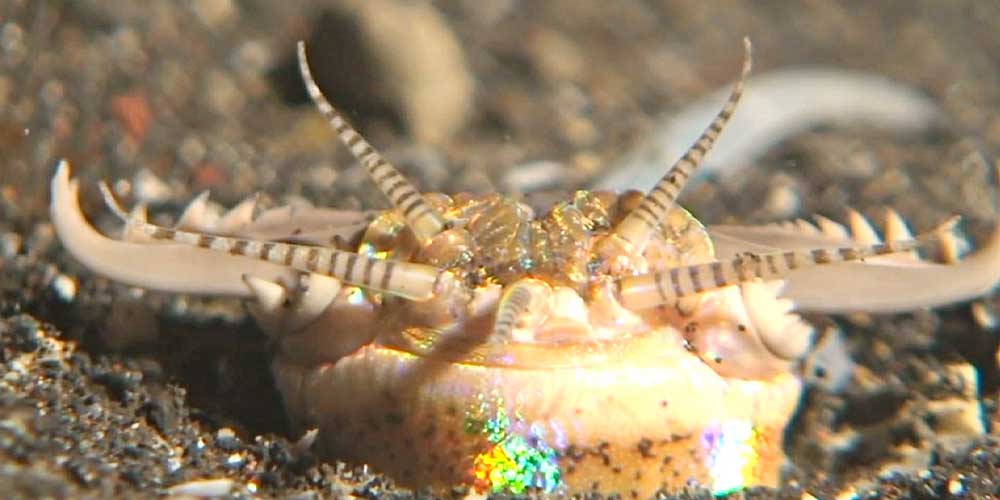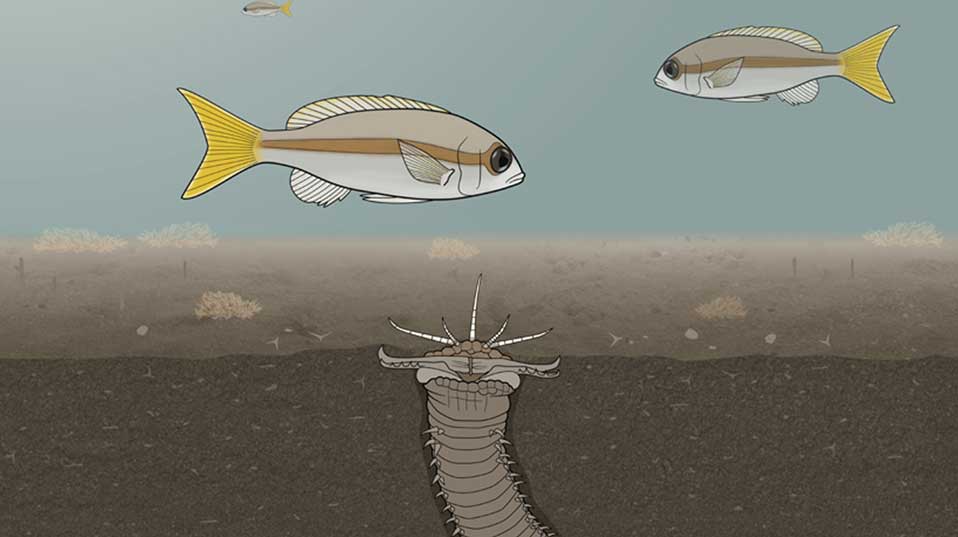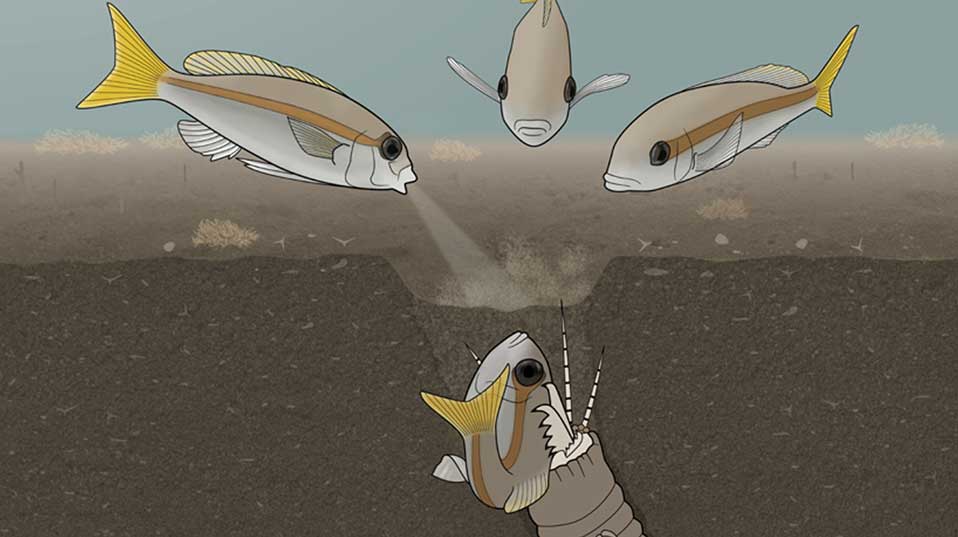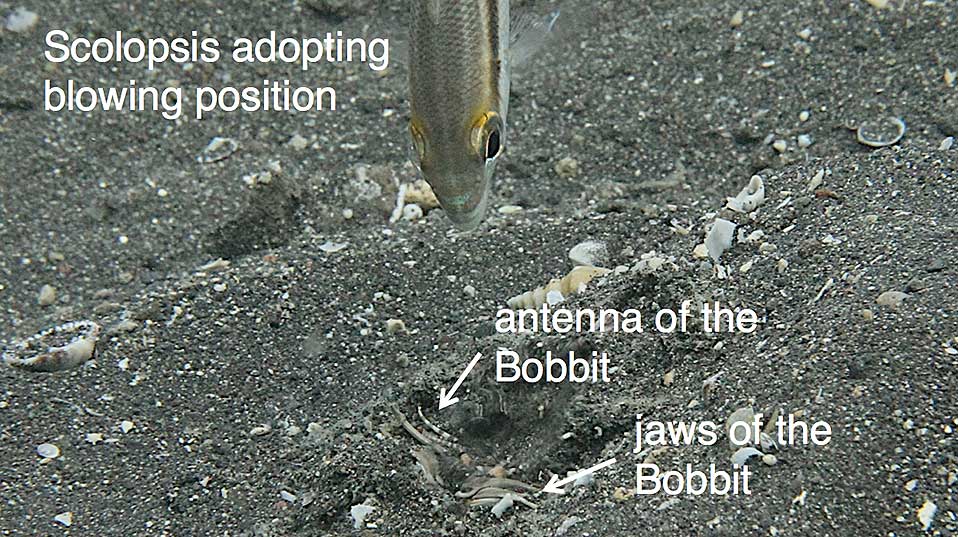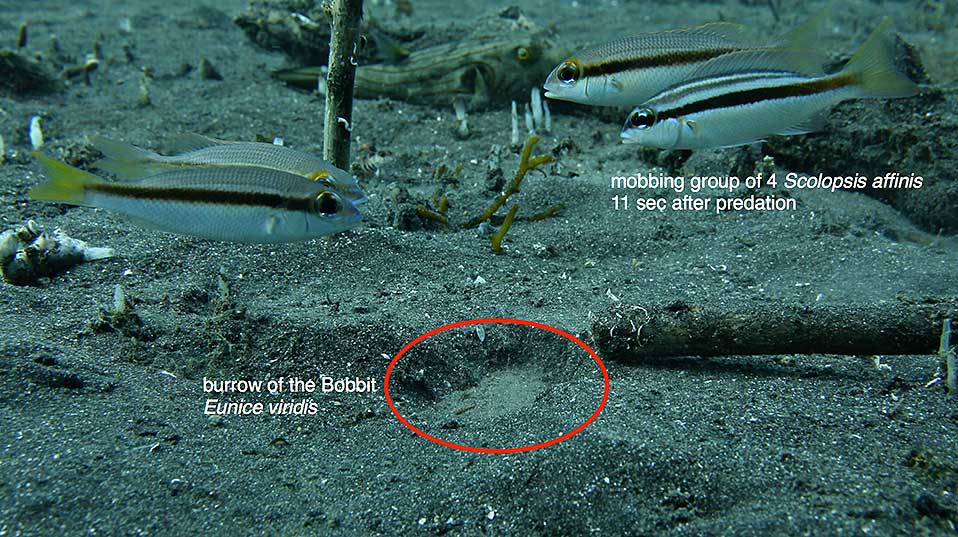Fish Against Monster Worms
Eunice aphroditois, also known as the Bobbit worm, buries its long body deep in the sand, leaving only its powerful jaws protruding above the surface. It uses these to grab hold of unsuspecting prey and drag it down into its burrow within a fraction of a second. Biologists from the University of Basel have taken a closer look at the gruesome hunter and its prey and noticed a fascinating behavioral pattern: prey fish defend themselves against the monstrous worm by attacking it with water jets and forcing it to retreat. The study has been published in Scientific Reports.
20 September 2016
The Bobbit worm (Eunice aphroditois) ambushes its prey using a hunting technique based on outstanding camouflage and the element of surprise. The annelid buries itself in the sand up to its head and lies in wait for its prey, luring it in with worm-shaped tentacles. Any fish that strays too close succumbs to the lightning-quick grasp of the Bobbit's claws and is dragged down into its burrow. These annelid predators live beneath the sandy ocean floors of the Indo-Pacific and can reach up to three meters in length.
Fish use mobbing against superior foes
For the first time, biologists Jose Lachat and Daniel Haag-Wackernagel from the University of Basel's Department of Biomedicine have been able to observe how Scolopsis affinis fish from the Lembeh Strait in the Indo-Pacific take up arms against the Bobbit worm. If a Scolopsis discovers a Bobbit worm or observes a fellow species member being caught, it initiates a behavior known in biology as “mobbing”, in which otherwise defenseless prey animals attack their predators.
In the case of the Scolopsis, the fish swims to the entrance of the worm’s burrow, positions itself nearly vertically face-down above it, and blows sharp jets of water in the Bobbit’s direction. Members of the same species who catch sight of this behavior will join in, blasting the ambusher with a battery of water jets until it is forced to retreat into its burrow. Once the predator has been detected and located, its chances of carrying out further ambushes are ruined.
Smarter than you think
The researchers believe this behavior can be explained by the increased chances of survival that come with discovering a Bobbit’s burrow, especially since the worms tend to remain in a single location. Not only do the mobbers know the location of their predator’s habitat, allowing them to avoid it in future, but they have also made the worm's location visible to all other fishes in the area. The researchers have also discovered another, related fish species (Scolopsis bilineatus) that demonstrates the same kind of mobbing behavior.
“Concerning their mental capacity, fish are for the most part greatly underestimated. Research into their behavior in their natural habitats continues to reveal big surprises,” explains Daniel Haag-Wackernagel from the University of Basel.
Original article
Jose Lachat and Daniel Haag-Wackernagel
Novel mobbing strategies of a fish population against a sessile annelid predator
Scientific Reports (2016), doi:10.1038/srep33187
Further information
Daniel Haag-Wackernagel, University of Basel, Department Biomedicine, Tel. +41 207 39 46 email: daniel.haag@unibas.ch
Images
Print-quality images for this press release are available in the media database.

